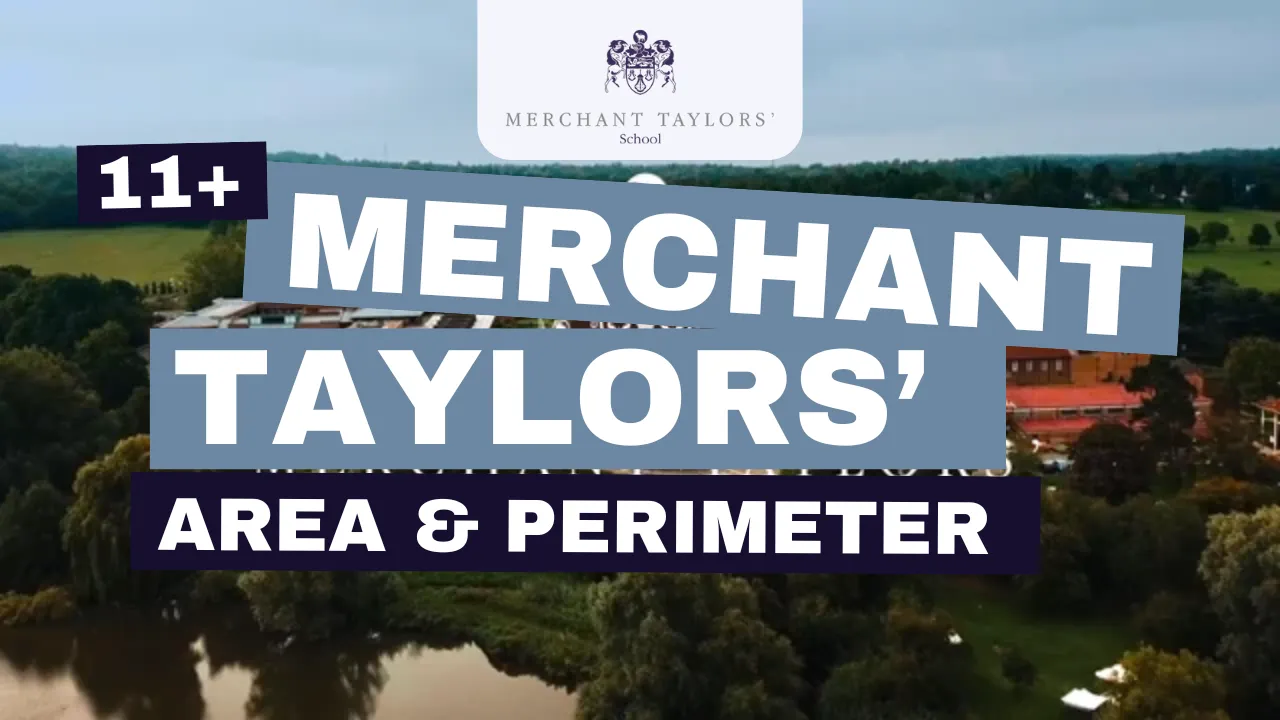We are diving into question 34 from the Merchant Taylors’ School Specimen Paper 1. This problem involves some interesting geometric calculations with a rectangle and a square. Let’s break it down together!
Problem Description
So, we’re moving on to question 34. Here’s what the problem states:
“A rectangle has a length of 50 millimetres and has the same area as a square with a side of 70 millimetres. Calculate the perimeter of the rectangle.”
This means we have two key shapes:
- A rectangle with one known length of 50 millimetres
- A square with a side of 70 millimetres
Our task is to find the perimeter of the rectangle.
Visualizing the Shapes
First things first, let’s draw these out to get a better understanding.
Rectangle and Square Visualization
Rectangle:Length = 50 mmWidth = ?Square:Side = 70 mmFrom the problem, we know that both the rectangle and the square have the same area.
Calculating the Area of the Square
The area of a square is straightforward. It’s simply the side length squared.
So, the area of our square is:[ \text{Area of square} = 70 , \text{mm} \times 70 , \text{mm} = 4900 , \text{mm}^2 ]
This calculation helps us because it tells us the area that our rectangle must also have, which is 4900 mm².
Finding the Width of the Rectangle
Given that the area of the rectangle is 4900 mm² and one of its lengths is 50 mm, we can use the area formula for a rectangle to find the unknown width.
[ \text{Area of rectangle} = \text{Length} \times \text{Width} ]
Plugging in the known values:
[ 4900 , \text{mm}^2 = 50 , \text{mm} \times \text{Width} ]
To find the width, we divide the area by the length:
[ \text{Width} = \frac{4900 , \text{mm}^2}{50 , \text{mm}} = 98 , \text{mm} ]
Calculating the Perimeter of the Rectangle
Now, let’s calculate the perimeter of the rectangle. The formula for the perimeter ( P ) of a rectangle is:
[ P = 2 \times (\text{Length} + \text{Width}) ]
Substituting the values we have:
[ P = 2 \times (50 , \text{mm} + 98 , \text{mm}) ][ P = 2 \times 148 , \text{mm} ][ P = 296 , \text{mm} ]
That means the perimeter of the rectangle is 296 millimetres.
Summary
Let’s summarise the steps taken to solve this problem:
- Understanding the Problem: We identified that we need to find the perimeter of a rectangle with one known length and the same area as a given square.
- Area Calculation for Square: We calculated the area of the square using its side length.
- Finding Rectangle’s Width: Using the area of the rectangle and one known length, we calculated the width.
- Perimeter Calculation: Finally, using the perimeter formula for a rectangle, we calculated the perimeter.
Key Takeaways:
- The area of a square is side length squared.
- When given the area and one dimension of a rectangle, the unknown dimension can be found by dividing the area by the known dimension.
- The perimeter of a rectangle is calculated as twice the sum of its length and width.
This problem tests the understanding of basic geometric principles and the ability to manipulate algebraic formulas. It also highlights the importance of clear, logical thinking in solving mathematical problems.

